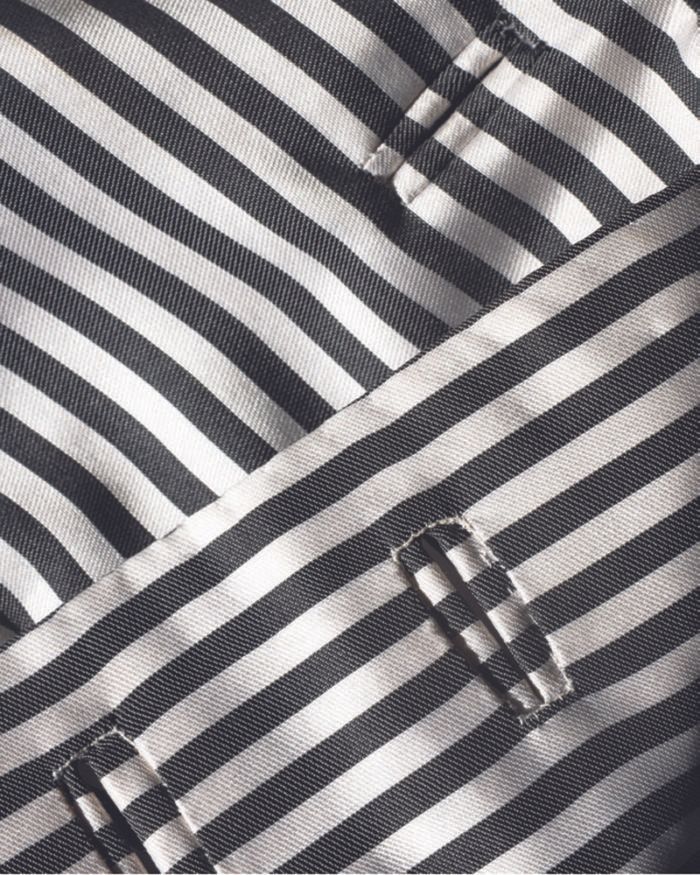
Most of you may have a favorite method for making bound buttonholes. Actually, author Claire Shaeffer has several, depending on the fabric and the garment design. For special situations, she even uses a faux bound buttonhole. She learned these methods from master tailors and world-famous designers. Though the differences among these techniques are sometimes subtle, each type has a particular purpose. Learn how these buttonholes are made while you get acquainted with their individual benefits.
There are general steps to follow with all buttonholes. First, always make a test buttonhole with a facing or with whatever setup you’ll have on the finished garment, to check the method and the size before making the final buttonholes. Bound buttonholes tend to shrink in production; if they’re too tight for the buttons, the corners will pull out and ravel.
Interface the buttonhole area on the wrong side, and mark the buttonhole locations on the right side. Mark the buttonhole placement line and the ends with hand basting or chalk, but never machine stitching. Once you’ve set the stage, the production is as rewarding as the results. Learn different buttonhole techniques in this article from Threads issue #160.
Start your 14-day FREE trial to access this story.
Start your FREE trial today and get instant access to this article plus access to all Threads Insider content.
Start Your Free TrialAlready an Insider? Log in


































I think you mean bound buttonholes not bounded
I have been using a variation of the patch method for years, to make welt pockets. At my local thrift store I found a fun vintage gadget for making bound buttonholes. It takes a little practice but it does work quite well.